Introductions:
Introduction of Dash 8 series:
The De Havilland Canada DHC-8, commonly known as the Dash 8, is a series of turboprop-powered regional airliners, introduced by de Havilland Canada (DHC) in 1984. DHC was later bought by Boeing in 1988, then by Bombardier in 1992; then by Longview Aviation Capital in 2019, reviving the De Havilland Canada brand. Powered by two Pratt & Whitney Canada PW150s, it was developed from the Dash 7 with improved cruise performance and lower operational costs, but without STOL performance. Three sizes were offered: initially the 37–40 seat -100 until 2005 and the more powerful -200 from 1995, the stretched 50–56 seats -300 from 1989, both until 2009, and the 68–90 seats -400 from 1999, still in production. The QSeries are post-1997 variants fitted with active noise control systems.
Introduction of Ansett New Zealand:
Ansett New Zealand was an airline serving the New Zealand domestic market between 1987 and 2001. It was a subsidiary of Ansett Transport Industries. In order to comply with regulatory requirements relating to the acquisition of Ansett Transit Industries by Air New Zealand, Ansett New Zealand was sold to News Corporation and later to Tasman Pacific Airlines of New Zealand in 2000, operating as a Qantas franchise under the Qantas New Zealand brand. It went into receivership and subsequently liquidation in 2001.
Introduction of Ansett New Zealand Flight 703
Ansett New Zealand Flight 703 was a scheduled flight from Auckland to Palmerston North. On 9 June 1995, the de Havilland Canada Dash 8-100 aircraft crashed into the Tararua Range on approach to Palmerston North. The flight attendant and three passengers died as a result of the crash; the two pilots and 15 passengers survived.
While conducting an instrument approach in inclement weather, the aircraft's right main landing gear failed to extend and the captain decided to continue the approach while the first officer performed the alternate extension procedure. Distracted with the first officer's attempt to lower the gear, the captain allowed the aircraft to drift off-profile towards the Tararua Range. Due to reasons unknown, the ground proximity warning system sounded with insufficient warning for the pilots to avert the accident.
The aircraft involved was De Havilland Dash 8-100, serial number 055, registered as ZK-NEY, It entered into service in December 1986, and had accumulated 22,154 flight hours and 24,976 flight cycles. The Dash 8 is a high-wing turboprop aircraft, with the main landing gear located below and retracting into the engine nacelles. As a result, the main landing gear is easily visible from the passenger cabin.
The captain was 40-year-old Garry Norman Sotheran, who had 7,765 flight hours, including 273 on the Dash 8. The first officer was 33-year-old Barry Brown, who had 6,460 flight hours, including 341 on the Dash 8. The flight attendant was 31-year-old Karen Anne Gallagher from Christchurch.
Flight 703 took off from Auckland Airport at 08:17 AM with 18 passengers and three crew on board. Approaching its destination, Palmerston North Airport, the pilots briefed for a preferred VOR/DME instrument approach to runway 07, with a circling approach to runway 25 if needed. At the time, Palmerston North Airport was reporting winds at 290 degrees (west-north-west) at 10 to 20 knots (19 to 37 km/h; 12 to 23 mph), which indicated runway 25 as the preferred runway. Visibility was reported at 20 kilometres (12 mi) reducing to 5 kilometres (3 mi), with few clouds (2 oktas) at 800 feet (240 m), scattered cloud (4 oktas) at 1,200 feet (370 m), and broken cloud (6 oktas) at 2,500 feet (760 m).
Due to departing traffic, air traffic control denied the approach to runway 07 and instead cleared Flight 703 for the VOR/DME approach to runway 25. Whereas the runway 07 approach would see the aircraft approach Palmerston North over the relatively flat Manawatu Plains, the runway 25 approach would instead take the aircraft on a 14-nautical-mile (26 km; 16 mi) arc to near Woodville, where it would intercept the final approach track into runway 25 and descend over the northern Tararua Range.
Once on the final approach, the captain (as pilot flying) called for the landing gear to be lowered. Thirty seconds later, the first officer noticed on the landing gear indicator that the right main landing gear was not down and locked. The captain ordered for the alternate gear extension procedure, and told the first officer to whip through the procedure and "see if we can get it out of the way before it's too late". After passengers also noticed the landing gear was not fully extended, the flight attendant communicated with the pilots to inform them of the situation.
The first officer referred to the aircraft's quick reference handbook (QRH) for the procedure, which required the pilot to open the alternate release door, pull down on the main gear release handle inside to operate the gear uplock, and then insert the handle into the manual hydraulic pump and operate it until the main gear was fully extended. The first officer however missed the step of pulling the release handle, to which the captain said "You're supposed to pull the handle...". The first officer pulled the handle and said "Yeah that's pulled here we go."
The distraction of the landing gear alternate extension procedure saw the aircraft inadvertently allowed to descend too low toward the range. Less than ten seconds after the first officer pulled the manual release handle, the ground proximity warning system (GPWS) sounded. The pilots pulled back on the control column and raised the nose to 8 degrees; before they could fully react to the GPWS alarm, the plane impacted the ground at 9:22 AM. The initial impact occurred at 1,272 feet (388 m) above sea level; an aircraft on profile should have been 2,650 feet (810 m) above sea level.
Note:
Credit to MAPA for the original aircraft
That’s it
Specifications
Spotlights
- MAPA 1.9 years ago
General Characteristics
- Predecessor Bombardier Dash-8 Q300 (Project Kings)
- Created On iOS
- Wingspan 92.8ft (28.3m)
- Length 75.7ft (23.1m)
- Height 26.7ft (8.1m)
- Empty Weight N/A
- Loaded Weight 31,664lbs (14,362kg)
Performance
- Horse Power/Weight Ratio 0.126
- Wing Loading 22.5lbs/ft2 (109.7kg/m2)
- Wing Area 1,409.0ft2 (130.9m2)
- Drag Points 3547
Parts
- Number of Parts 121
- Control Surfaces 9
- Performance Cost 605

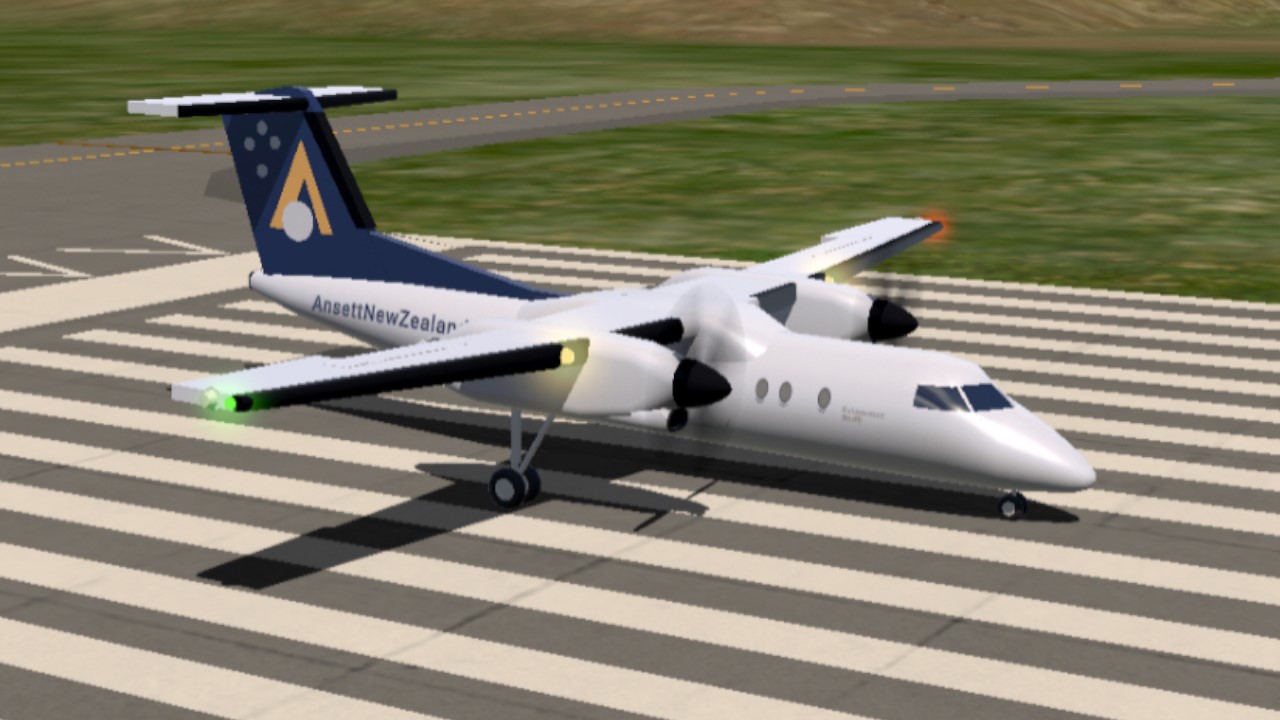

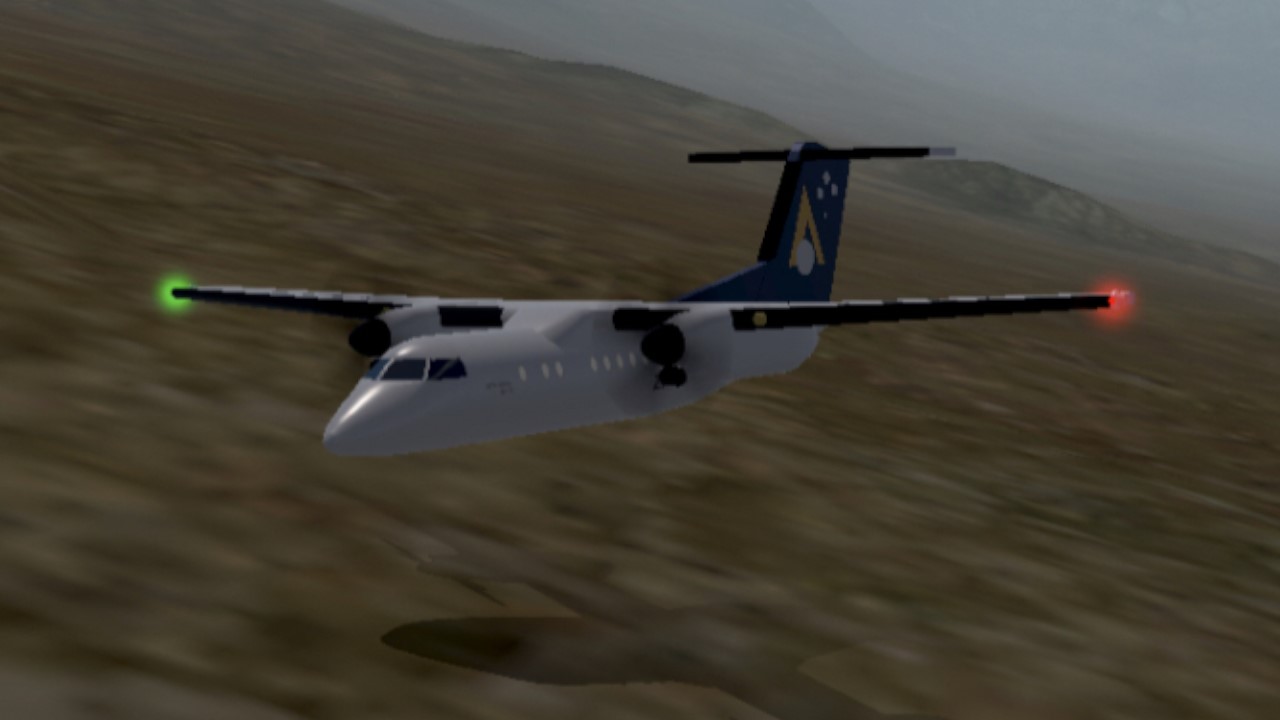
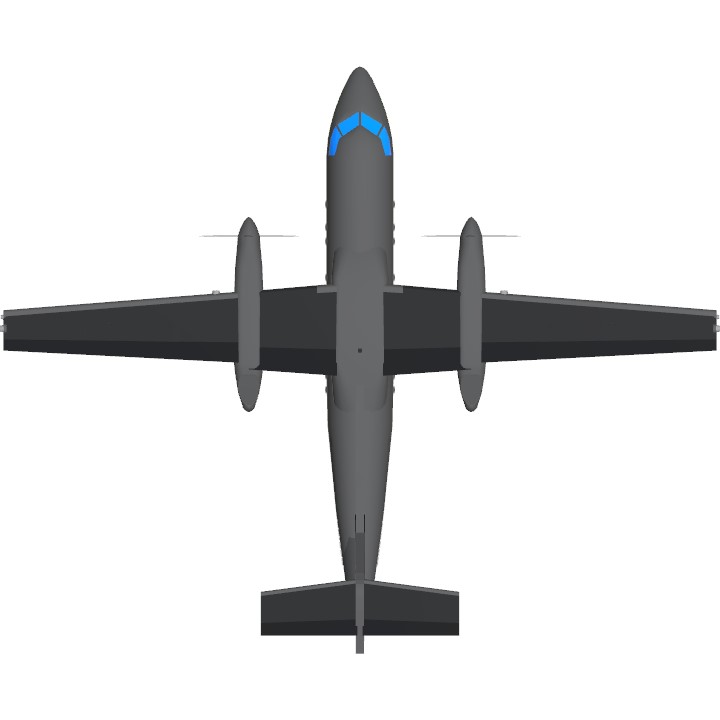
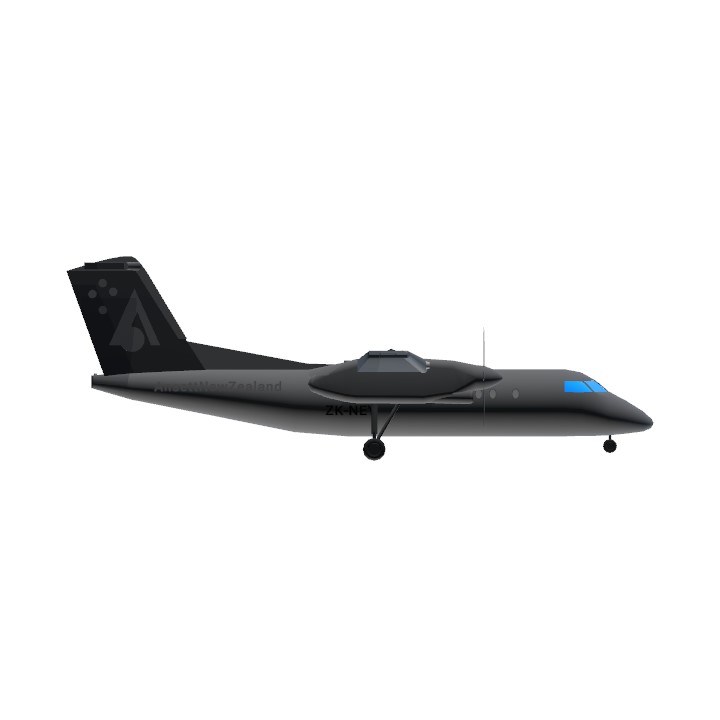
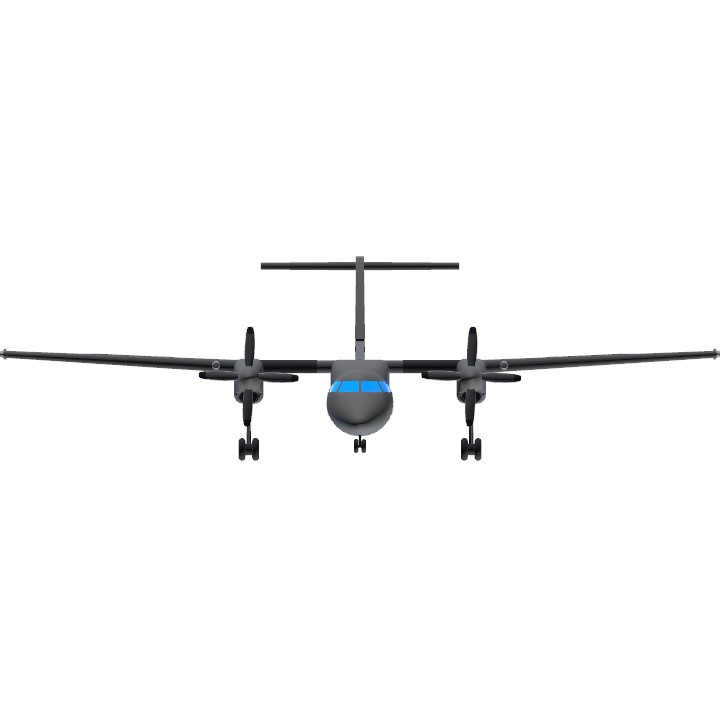
Nice! Can you make the ATR 72 600?
I would
@Playitbreads67663
It's fantastic!!! I love it but can you make a dash-8 q400 Alaska airline if you could do that. That will be awesome 😎👍
Good old Ansett
此时一位乘客默默的拿出了他的大哥大 ; )
@AeroflotBilibili
(起落架故障了)
副驾驶∶拉了,但没完全拉
(快要撞山了)
近地警报∶响了,但没完全响